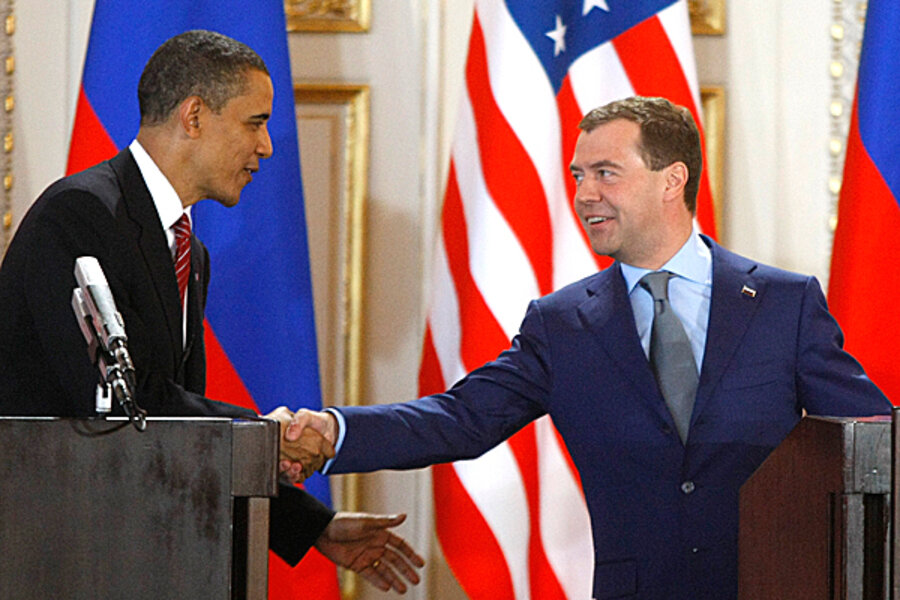START or ending? Why more nuclear weapons cuts will be hard.
Loading...
| Washington
As he signed a new treaty with Russia Thursday that will reduce the nuclear weapons in US and Russian arsenals by one-third, President Obama called the milestone “one step on a longer journey” that “will set the stage for further cuts.”
But if Mr. Obama found reaching a new Strategic Arms Reduction Treaty (START) more arduous and frustrating than he had anticipated – Obama missed his original deadline of early December for reaching an accord – moving on to additional arms cuts will be even more daunting.
Appearing in a glittery reception hall in the Czech capital of Prague alongside Mr. Medvedev, Obama offered a partial list of the next steps he hopes to take: further reductions in strategic weapons, cuts in the tactical weapons the two countries have focused on Europe, and an effort to reduce stockpiles of non-deployed weapons on each side.
The next stretch of the nuclear-reduction path is likely to be considerably steeper, however, arms experts say.
Hurdles to more cuts
First, the treaty signed today must win the support of 67 US senators for ratification. But it raises the ire of some conservative policymakers who say the cuts invite instability by tempting other nuclear powers (particularly China) to contemplate achieving nuclear parity.
For its part, Russia is worried about what impact a smaller arsenal might have on its superpower self-image. Moreover, it is likely to resist any reductions in tactical weapons, partly because it sees them as a guarantee against NATO’s superior conventional forces.
“For the Russians, because of the deterioration of the conventional weapons projection capability, nuclear weapons are more important in their overall military doctrine,” says Andrew Kuchins, director of the Russia and Eurasia Program at the Center for Strategic and International Studies in Washington. “That gets to the question of how possible or how difficult future agreements are going to be [for] getting to a next round of reductions with the Russians.”
It is important not to "oversell" the significance of the new START, says Mr. Kuchins. The US and Russia, with a new limit of 1,550 nuclear warheads each, will remain by far the world’s predominant nuclear powers.
But the treaty is nevertheless significant, he adds: First, for what it says about the considerably improved US-Russia working relationship under Obama, and then for the message it sends to the rest of the world.
Good timing
Kuchins says it is “extremely important” that the agreement was reached before the Non-Proliferation Treaty review conference at the United Nations in May. The 1970 treaty calls for nuclear states like the US and Russia to reduce their arsenals in exchange for non-nuclear states foregoing any pursuit of nuclear weaponry.
Obama mentioned this in his Prague statement, when he said that “together” the US and Russia “are keeping our commitments under the NPT, which must be the foundation of global non-proliferation.”
But nuclear arms experts say both the US and Russia are going to have to increasingly take China into account as they contemplate any further nuclear arms reductions. That said, the new START, with its reduction to 1,550 warheads, is not yet likely to cause China, with about 200 deployable strategic warheads, to come running, says Roger Molander, a nuclear arms expert at the RAND Corp. in Arlington, Va.
“You could see [the US and Russia] skipping the next bilateral stage to go to the multilateral, but you can already contemplate the Chinese saying, ‘Are you guys kidding me? You’re at 1,550, and you say you want me to come in on negotiations?’” Mr. Molander says. “'Call me when you get to 800 to 900.”
He adds: “New START is a good start. But all these other problems – the Chinese, tactical and non-deployed weapons – are going to have to be addressed if we want to get to further reductions.”





